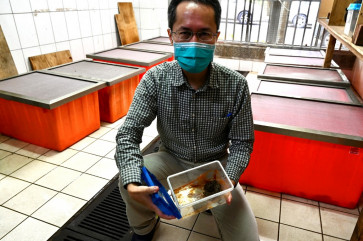Popular Reads
Top Results
Can't find what you're looking for?
View all search resultsPopular Reads
Top Results
Can't find what you're looking for?
View all search resultsTaiwan rushes to contain sudden cane toad invasion
Change text size
Gift Premium Articles
to Anyone
T
oads are a symbol of prosperity and good fortune in Taiwan, but the unexpected discovery of an invasive species has officials and environmentalists scrambling to contain their spread.
With flashlights in hand and shielded by protective gloves, dozens of volunteers from the Taiwan Amphibian Conservation Society worked through the night searching rice fields and vegetable plots for their quarry -- the cane toad.
There should be no reason for these large and highly toxic amphibians to exist in Chaotun, a township in the foothills of Taiwan's central mountain range.
Cane toads are indigenous to South and Central America and while they have wrought a famously destructive path through places like Australia and the Philippines they had not been recorded in Taiwan.
That was until a few weeks ago when a local resident discovered some large amphibians hanging out in her community vegetable garden and uploaded a photograph online, a move that sparked an immediate toadhunt.
"A speedy and massive search operation is crucial when cane toads are first discovered," Lin Chun-fu, an amphibian scientist at the government-run Endemic Species Research Institute told AFP as he explained why conservationists have since rushed to find and remove any cane toads.
"Their size is very big and they have no natural enemies here in Taiwan," he added.



















